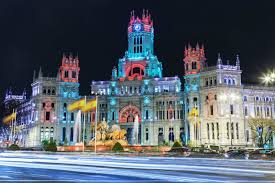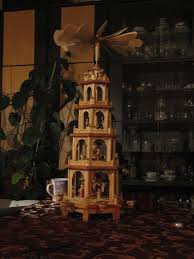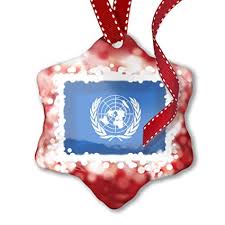
It’s that wonderful time of the year again! While there’s reason for stress, amplified loneliness, or reflection on the negative, there’s ample stimuli to bring us feelings of love, joy and excitement. Almost all of the positive arises from the colorful traditions dating back centuries ago in countries we may never have visited. We are beneficiaries of those enduring customs and that is especially true here in the melting pot known as the United States of America. Let’s visit a few of those countries now and see what they contributed to the holiday season as we know it.
Germany
Germans have held steadfastly to their Christmas traditions. They have reasons to be proud of them. Their country was the first to bring the evergreen tree inside for holiday decorations. That was in the 16th century. Martin Luther was walking the streets of Germany then and it is said that he was the first to place lighted candles on the Christmas tree.
Before the Christmas tree, the Christmas pyramid was very popular in Germany. It continues to have its place today. The Christmas pyramid has its origins in the Middle Ages. It is made of wood and has three or more platforms with decorative sides and a pole through the center. It’s hung from the ceiling usually, turning to show such things as nativity scenes, angels or folksy figures.

The Germans also originated Advent celebrations and Christmas markets. They emphasize Saint Nicholas Day as well.
Italy
Obviously, a huge part of Italy’s Christmas revolves around the Vatican. A huge Christmas tree is erected in front of St. Peter’s Cathedral for the season. People buy tickets for Midnight Mass, a sacred worldwide event officiated by the Pope.
Nativity scenes actually originated in Italy and they remain a basic part of the holy Christmas ambiance.
In communities around the country, bagpipers and flutists known as zampognari enter the towns and play publicly. They dress as and represent shepherds looking for the baby Jesus.
Father Christmas comes and brings gifts to the children on Christmas Eve. In Italy, he is called Babbo Natale. The gift exchange by everyone else is not held until January 6th. A traditional food for that occasion is pannettone, a sweet yeast cake.
Norway
On visitoslo.com, you will find the following quote: “Christmas in Norway is based on Christian traditions, with elements of old pagan traditions and Jewish Hanukkah. And new traditions are added every year.” Let’s concentrate on those old ones, though. After all, what’s a tradition without some time built into it?
On December 23rd, families have their own “Little Christmas Eve.” They enjoy good company and special foods such as risengrynsgrot, a hot rice pudding that has one almond hidden in it somewhere. The lucky person with the almond wins a marzipan pig. It’s also common for people to make a gingerbread house on this occasion.
On actual Christmas Eve, Norwegians run around getting gifts or going to church services. At 5:00 PM, the stores and pubs close and everyone is supposed to head home to place the presents under their trees. Dinner follows. “The most popular Christmas Eve dinner is the ribbe (pork ribs or pork belly, bone in), but lutefisk (cod cured in lye), pinnekjøtt (dry-cured ribs of lamb), boiled cod, ham roast and turkey are also common dishes.” Then, after dinner, the gifts are opened.
Israel
In this region known to many as The Holy Land, Christians are much in the minority. Israel, however, is the one country in the Middle East where Christians are widely granted the right to worship in peace. Interestingly, Jerusalem is known as the city of three Christmases. It is recognized by different denominations on different days. The Catholics and Protestants have their services on December 25th, but the Orthodox Christians celebrate on January 6th and the Armenian Christians do theirs on January 18th.
In Nazareth, a Christmas Eve parade is held along the main street. It works its way to the Basilica of the Annunciation. Then, in the evening, Israel’s Ministry of Tourism sponsors a fireworks display.
Starting three weeks before Christmas, many Israeli Christians light a candle weekly until the holiday arrives. Many attend church services with communion. Getting together with friends and relatives is common as it is with Christians all over the world, but the food served has its own Middle East unique character. Barbecue, salads, grape leaves and savory pastries are consumed with a seasonal delight.
We Are The World
As we enjoy our own American traditions, it’s nice to think of those around the globe who are spending Christmas in their own nostalgic customs. May we find unity as we raise our voices in joy and praise to the Christ in all of us.
